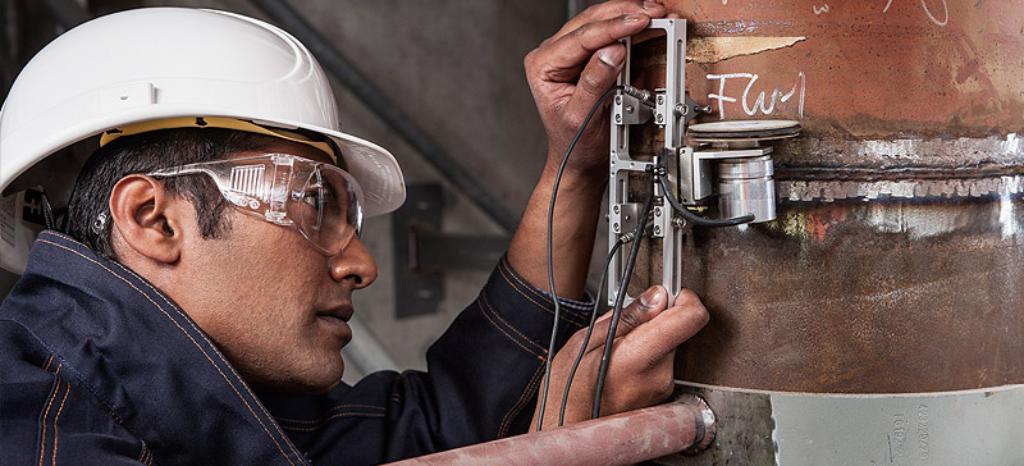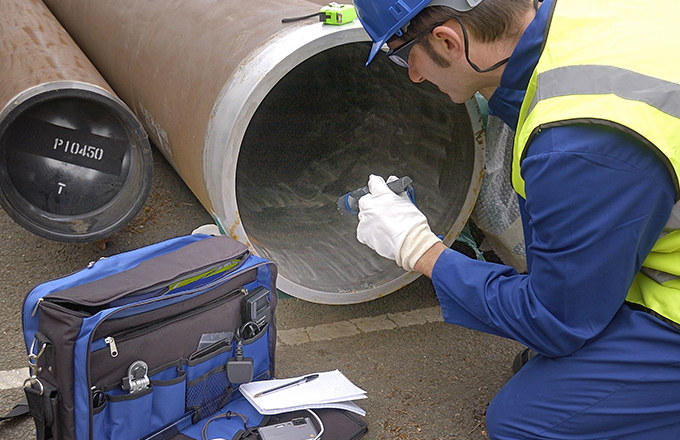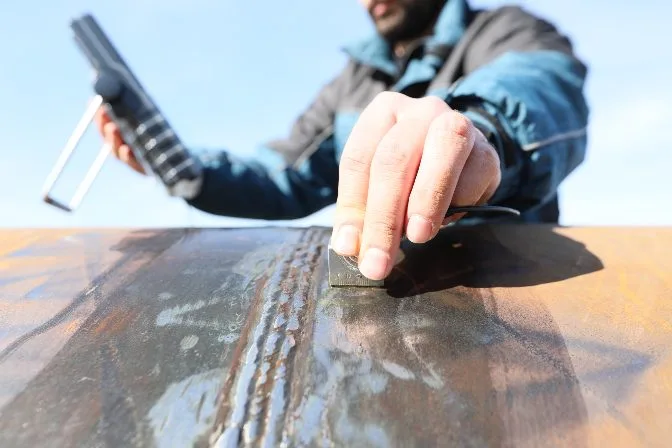Premier Houston Welding Inspection Solutions for Industrial Standards
Wiki Article
Checking Out the Fundamentals of Welding Inspection: A Detailed Assessment of Processes, Devices, and the Relevance of Quality Assurance in Welding Industries
Welding examination serves as a keystone in the maintenance of security and architectural stability throughout various markets. Recognizing the ramifications of these practices raises vital questions regarding their performance and the future direction of high quality guarantee in welding.Relevance of Welding Inspection
Welding assessment plays an essential function in making certain the integrity and security of bonded frameworks. It acts as a methodical technique to reviewing weld quality, determining prospective issues, and making certain conformity with recognized criteria and specifications. The value of welding inspection prolongs past mere adherence to laws; it is essential in guarding human lives and shielding investments in facilities.Malfunctioning welds can result in disastrous failings, causing substantial financial losses, injury, or loss of life. For that reason, extensive inspection procedures are necessary to identify concerns such as poor infiltration, porosity, or fractures before they intensify right into critical failures. In addition, efficient welding evaluation contributes to the general performance and long life of structures, ensuring that they can stand up to the problems for which they were developed.
In addition, the application of welding inspection cultivates a culture of high quality and accountability within the welding sector. By prioritizing assessment, organizations demonstrate their dedication to excellence, thereby boosting their reputation and competition in the marketplace. Ultimately, welding inspection is not simply a procedural action yet an essential component of design stability and safety and security assurance, essential for the effective implementation of welding projects across numerous industries.
Trick Evaluation Processes
An extensive strategy to welding evaluation entails several crucial procedures that are important for ensuring weld quality and architectural integrity. The very first important procedure is visual inspection, which enables assessors to recognize surface area issues such as fractures, porosity, and improper bead appearance. This method offers as an initial evaluation to make certain that the weld meets defined criteria.

Additionally, destructive screening might be done on sample welds to evaluate their mechanical residential properties and efficiency under anxiety. This process includes impact, fatigue, and tensile screening to confirm that the weld can stand up to operational problems.
Last but not least, documentation and coverage are crucial parts of the evaluation procedure. Preserving accurate documents of examinations, monitorings, and examination results helps make sure compliance with sector requirements and facilitates continuous renovation in welding methods. Jointly, these key procedures form the foundation of efficient welding examination and quality control.
Devices for Weld Assessment
Numerous devices are crucial for efficient weld evaluation, each created to assess various elements of weld top quality and performance. Among one of the most commonly utilized are visual evaluation devices, including magnifying glasses and borescopes, which allow examiners to identify surface problems such as fractures, porosity, and inappropriate combination.In addition, ultrasonic testing (UT) devices is essential for identifying interior imperfections. This tool utilizes high-frequency audio waves to disclose gaps within the weld, ensuring the stability of the product. Radiographic screening (RT) devices, which make use of X-rays or gamma rays, similarly offer insight right into the inner structure of welds, enabling for the identification of inclusions or voids.
For accurate dimensions, calipers and determines play a significant role in figuring out weld measurements and making sure adherence to defined tolerances. read this article Solidity testers review the mechanical homes of the weld, ensuring it satisfies performance requirements.

Techniques for Assessing Quality
Just how can the high quality of welds be dependably assessed? A variety of strategies are utilized to evaluate weld stability and guarantee adherence to defined requirements. Visual examination is the most fundamental technique, allowing assessors to determine surface area defects such as splits, porosity, or undercutting. This non-destructive method serves as a first evaluation before even more advanced methods are made use of.Ultrasonic testing (UT) is another popular strategy that uses high-frequency acoustic waves to spot inner defects within the weld. Houston Welding Inspection. This approach provides a detailed sight of the weld's integrity without jeopardizing its architectural integrity. On top of that, radiographic screening (RT) employs X-rays or gamma rays to expose inner defects, providing thorough understandings into weld high quality
Magnetic bit testing (MT) works for detecting surface area and near-surface interruptions in ferromagnetic materials, making use of electromagnetic fields and colored fragments to highlight flaws. Lastly, dye penetrant screening (PT) can be used to reveal surface-breaking flaws by using a dye that seeps into cracks and is consequently disclosed.
Compliance With Sector Standards
Compliance with sector criteria is vital for ensuring the quality and safety of bonded frameworks. These standards, developed by organizations such as the American Welding Society (AWS) and the American National Standards Institute (ANSI), provide standards that control the welding process, materials, and evaluation protocols. Sticking to these criteria not just makes sure the structural stability of welds but likewise alleviates dangers related to failings that might lead to catastrophic consequences.
Welding inspectors are charged with verifying conformity with these requirements throughout index the welding process (Houston Welding Inspection). This entails evaluating welding procedures, keeping an eye on welder certifications, and carrying out comprehensive inspections of the final item. Non-compliance can result in substantial monetary repercussions, project delays, and damages to a company's reputation
Normal training and updates on standards are necessary to maintain personnel notified and knowledgeable, ensuring that all elements of welding procedures meet or surpass governing demands. Ultimately, dedication to her response sector requirements serves as a foundation for quality in the welding sector, advertising safety and reliability in welded structures.

Verdict
To conclude, welding evaluation serves as an important element in preserving the security and stability of bonded frameworks. Via the implementation of essential evaluation processes and the usage of advanced tools and strategies, possible flaws can be recognized and resolved properly. Adherence to sector requirements guarantees compliance and promotes a society of high quality within the welding market. Ultimately, rigorous examination techniques not only protect human lives but additionally improve the sturdiness and performance of bonded building and constructions.Moreover, the execution of welding inspection cultivates a culture of top quality and responsibility within the welding industry. Eventually, welding inspection is not just a procedural action but a fundamental part of engineering honesty and security guarantee, important for the effective execution of welding tasks across different fields.
A comprehensive approach to welding assessment involves a number of vital processes that are necessary for guaranteeing weld high quality and architectural integrity. These requirements, developed by organizations such as the American Welding Society (AWS) and the American National Requirement Institute (ANSI), provide guidelines that control the welding procedure, materials, and evaluation methods.Welding inspectors are charged with confirming conformity with these standards throughout the welding process.
Report this wiki page